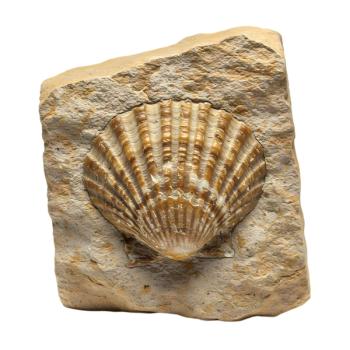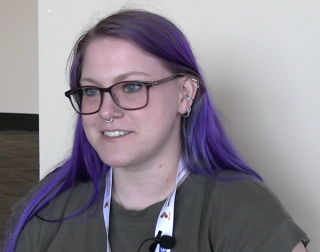
Raman Spectroscopy
Latest News

Latest Videos

More News

Vibrational spectroscopy is undergoing a major transformation driven by advances in new AI and machine learning, portable instrumentation, nanofabrication, hyperspectral imaging, and robust chemometrics. These developments are enabling more sensitive measurements, field-deployable analysis, multimodal data fusion, and automated spectral interpretation suitable for real-world industrial and clinical use. As these technologies converge, the field is positioned for a renaissance that may redefine how spectroscopy is practiced by 2030.

This review article highlights how a new review by Da-Wen Sun demonstrates that integrating spectroscopy with chemometric techniques can significantly improve cold chain food quality monitoring, authentication, and overall system efficiency.

A new review by researchers from the University of Waterloo, Sanofi, and McGill University highlights how vibrational and fluorescence spectroscopy are reshaping real-time monitoring of pharmaceutical bioprocesses. The authors detail recent advances in UV-Vis, NIR-MIR, Raman, and fluorescence sensing, supported by modern chemometrics and AI tools.

Webinar Date/Time: Wed, Dec 10, 2025 11:00 AM EST

The miniaturization of spectroscopic instruments has reached a remarkable milestone: wearable vibrational spectroscopy. Techniques such as Raman, surface-enhanced Raman scattering (SERS), infrared (IR), and functional near-infrared (fNIRS) spectroscopy are no longer confined to the laboratory bench—they now fit on our bodies, into household devices, and onto industrial equipment. These wearable devices promise continuous, real-time monitoring, offering molecular-level insights for personal health, household management, clinical care, and industrial applications.

A recent study investigates microplastic contamination in beverages sold in South Africa, exploring whether it impacts alcoholic and non-alcoholic beverages more directly.

This second part of the Recent Research in Chemometrics and AI for Spectroscopy article surveys current and emerging applications of artificial intelligence (AI) in spectroscopy, highlighting explainable AI (XAI), deep learning, and generative AI frameworks.

This first article in a two-part series introduces the foundations and terminology of AI as applied to chemometrics, defines key algorithmic approaches, and explores their growing role in spectral data analysis, model quantitative calibration, classification, and interpretability.

Webinar Date/Time: Thursday, November 20th, 2025 Morning Session: 10am EST | 7am PST | 3pm BST | 4pm CEST Afternoon Session: 1:30pm EST | 10:30am PST | 6:30pm BST | 7:30pm CEST Friday, November 21st, 2025 Morning Session: 10am EST | 7am PST | 3pm BST | 4pm CEST Afternoon Session: 1:30pm EST | 10:30am PST | 6:30pm BST | 7:30pm CEST Thursday December 5th, 2024 Morning Session: 10:00 am EDT - 12:00 pm EDT Afternoon Session: 1:00 pm EDT - 1:40 pm EDT

This article provides a clear refresher on key spectroscopy techniques—IR/NIR, Raman, UV–Vis, XPS/XAS, NMR, ICP-MS, and LIBS—and their applications in the energy industry, from batteries and solar panels to fuel production and emissions monitoring.

A sweeping review, “Surface-Enhanced Raman Spectroscopy: A Half-Century Historical Perspective” traces the evolution of SERS from its foundational experiments in the 1970s through the nanoscience era and modern high-spatial-resolution techniques.

Here are ten main unsolved problems in vibrational and atomic spectroscopy, each accompanied by a tutorial-style synopsis suitable for advanced practitioners or graduate-level students. Each of these tutorials, spanning advanced spectroscopy modeling, chemometrics, machine learning (ML) interpretability, and standardization, consists of a descriptive article. Each piece is well-referenced (with detailed matrix equations, radiative transfer models, chemometric derivations, and so forth), and includes the following. • Special focus on each topic—including mathematical derivations in matrix notation. • Conservative, verifiable content anchored to established reference sources. • Appropriate tutorial article structure: Title, Summary, Abstract, Introduction, Theory with equations, Examples, Discussion & Future Research, and References.

This curated collection of recent Spectroscopy magazine mini-tutorials highlights the latest analytical and data-driven innovations in vibrational spectroscopy. Covering NIR, Raman, O-PTIR, and related optical methods, the series emphasizes practical workflows, emerging machine learning integrations, and advanced chemometric techniques for real-world laboratory applications—from food and environmental monitoring to biomedical analysis and nanoscale imaging.

A new perspective from researchers at the Karlsruhe Institute of Technology explores the evolving relationship between human expertise and artificial intelligence in polymer chemistry.

James Dudley Winefordner was a preeminent figure in analytical chemistry whose contributions to spectrochemical method development, instrumentation, and mentoring shaped generations of scientists.

This tutorial explains how baseline drift and multiplicative scatter distort spectroscopic data, reviews correction techniques such as MSC, SNV, EMSC, wavelet-based detrending, and AsLS baseline estimation with matrix-based derivations, and explores emerging data-driven scatter modeling strategies and future research directions.

A recent review by Jhonatan Contreras and Thomas Bocklitz from Friedrich Schiller University Jena and the Leibniz Institute of Photonic Technology delves into the emerging field of explainable artificial intelligence (XAI) in spectroscopy.

This tutorial examines the development of universal spectral libraries, reviewing standardization efforts, mathematical frameworks, and practical examples across multiple spectroscopies, while emphasizing metadata harmonization, FAIR principles, and the emerging role of AI in building interoperable, machine-readable repositories. This remains an unsolved problem in spectroscopy.

The StellarScope AM/PA Raman Particle Analyzer, launched by StellarNet Inc., is an advanced analytical platform that merges automated mapping with particle analysis.

Researchers utilize Raman spectroscopy to uncover the lost colors of prehistoric mollusk shells, revealing their cultural significance and aesthetic choices.

This tutorial explores the challenges posed by nonlinearities in spectroscopic calibration models, including physical origins, detection strategies, and correction approaches. Linear regression methods such as partial least squares (PLS) dominate chemometrics, but real-world data often violate linear assumptions due to Beer–Lambert law deviations, scattering, and instrumental artifacts. We examine extensions beyond linearity, including polynomial regression, kernel partial least squares (K-PLS), Gaussian process regression (GPR), and artificial neural networks (ANNs). Equations are provided in full matrix notation for clarity. Practical applications across near-infrared (NIR), mid-infrared (MIR), Raman, and atomic spectroscopies are discussed, and future research directions are outlined with emphasis on hybrid models that integrate physical and statistical knowledge.

Recently, a team of researchers from Portugal examined a new method that could improve accessibility to kidney disease diagnostics.

Despite decades of major monetary investment for applied research in multiple spectroscopic sensing technologies, achieving an accurate, portable, and painless noninvasive glucose monitor remains a major unmet goal in diabetes care. This goal is extremely difficult due to persistent challenges with sensitivity, analyte specificity, accuracy, calibration stability, and biological interference.


This tutorial explores the motivation, mathematical underpinnings, and practical approaches to fusing spectral data, with emphasis on early, intermediate, and late fusion strategies.













